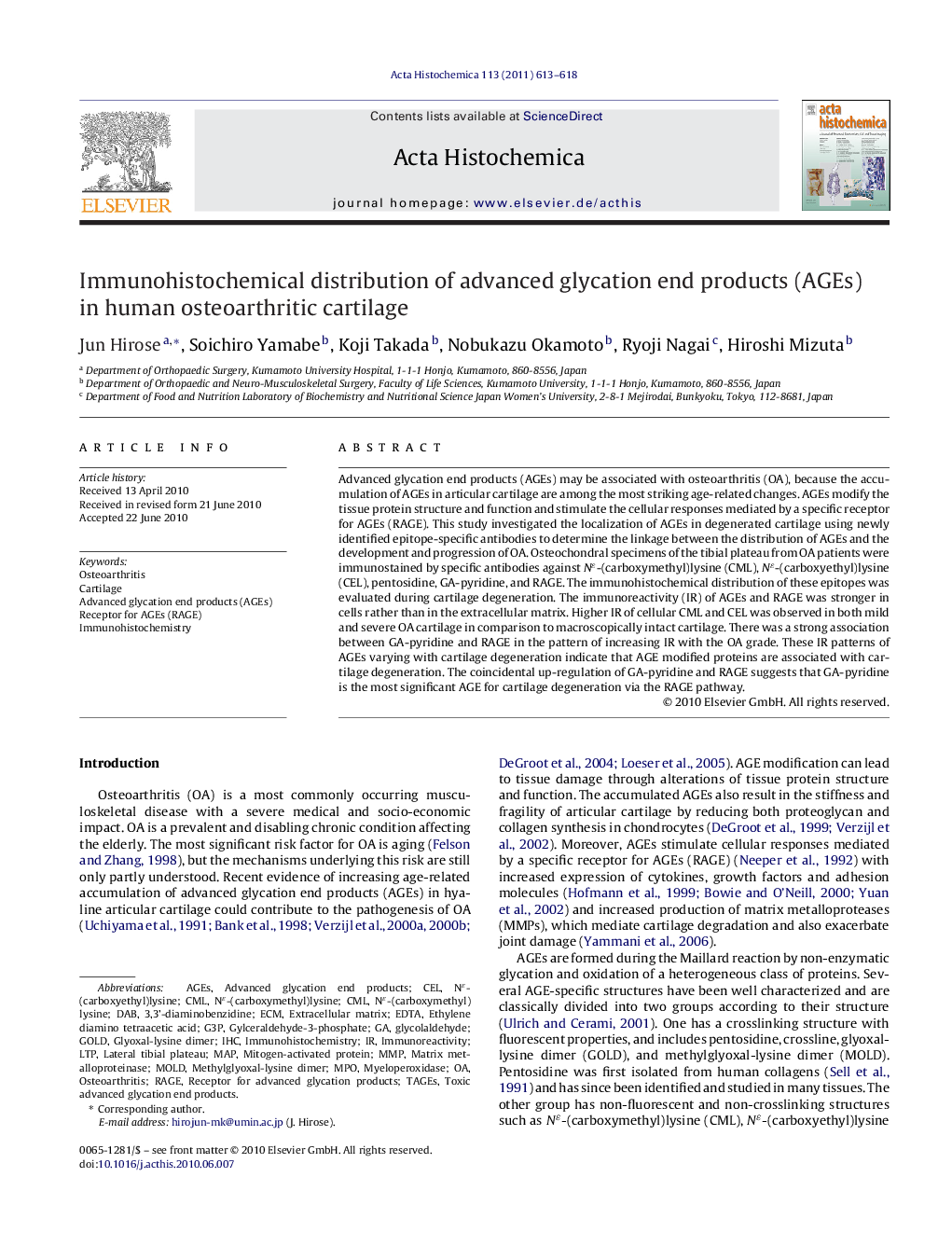| Article ID | Journal | Published Year | Pages | File Type |
|---|---|---|---|---|
| 1924027 | Acta Histochemica | 2011 | 6 Pages |
Advanced glycation end products (AGEs) may be associated with osteoarthritis (OA), because the accumulation of AGEs in articular cartilage are among the most striking age-related changes. AGEs modify the tissue protein structure and function and stimulate the cellular responses mediated by a specific receptor for AGEs (RAGE). This study investigated the localization of AGEs in degenerated cartilage using newly identified epitope-specific antibodies to determine the linkage between the distribution of AGEs and the development and progression of OA. Osteochondral specimens of the tibial plateau from OA patients were immunostained by specific antibodies against Nɛ-(carboxymethyl)lysine (CML), Nɛ-(carboxyethyl)lysine (CEL), pentosidine, GA-pyridine, and RAGE. The immunohistochemical distribution of these epitopes was evaluated during cartilage degeneration. The immunoreactivity (IR) of AGEs and RAGE was stronger in cells rather than in the extracellular matrix. Higher IR of cellular CML and CEL was observed in both mild and severe OA cartilage in comparison to macroscopically intact cartilage. There was a strong association between GA-pyridine and RAGE in the pattern of increasing IR with the OA grade. These IR patterns of AGEs varying with cartilage degeneration indicate that AGE modified proteins are associated with cartilage degeneration. The coincidental up-regulation of GA-pyridine and RAGE suggests that GA-pyridine is the most significant AGE for cartilage degeneration via the RAGE pathway.
